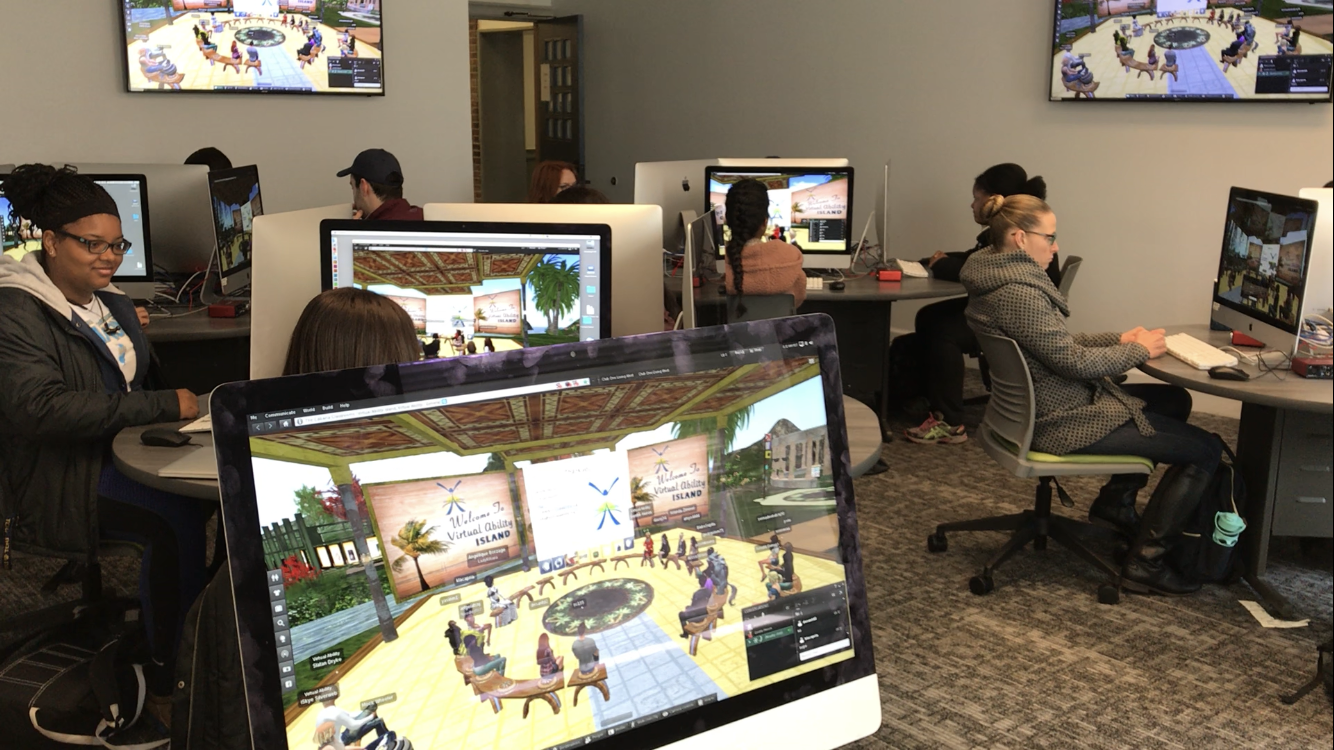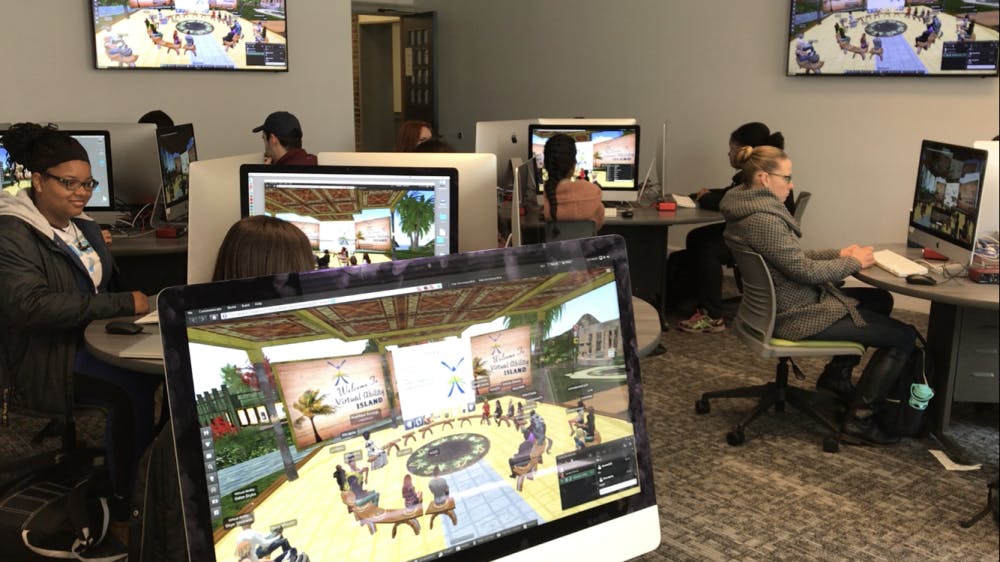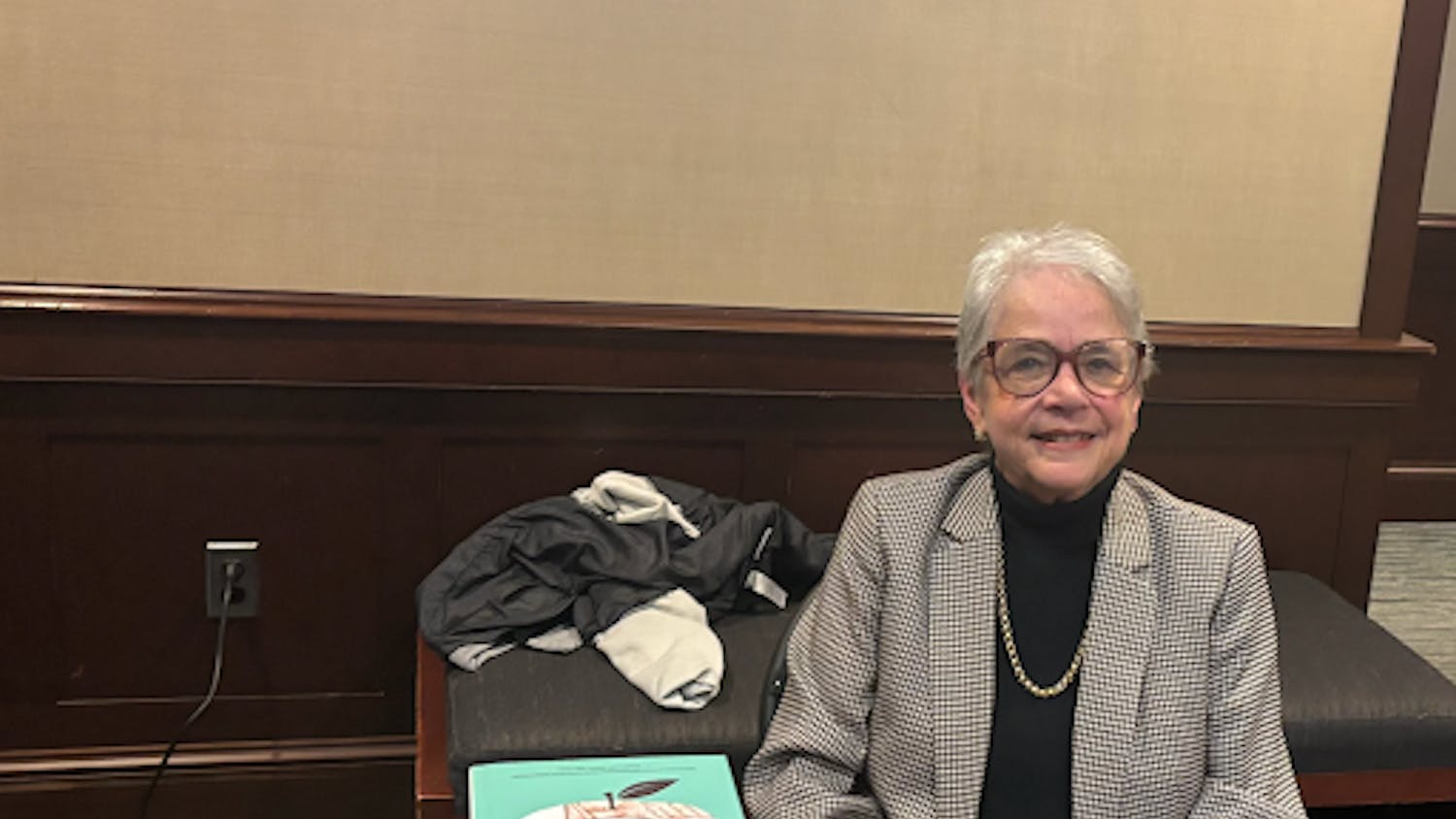By Thomas Infante
Editor-in-Chief
Kendall Hall Room 133, once a neglected teleconferencing room in desperate need of renovation, is now equipped with brand new Apple desktop computers, audio mixers and 60-inch monitors on each wall that can display images from any of the computers in the room.
While communication studies students will have a much easier time learning about editing and production techniques, they can hardly escape the architectural flaws that plague the building with inconsistent temperatures and outside noise.
Despite the addition of the state-of-the-art lab, longtime faculty of the communication studies department say that there are still many aspects of the building that need improvement.

The Kendall Hall teaching and learning lab was conceived as a modern model of Room 133, which was originally designed to be a distance learning conference room. Unfortunately, it became largely unused once video chatting platforms like Skype became widely available, according to Paul D’Angelo, department chair of communication studies.
“The room always had a technological purpose, but it was never equipped for the purposes of teaching RTF (radio, television and film specialization) students until now,” D’Angelo said.
With computers arranged in groups of four, the new lab is optimal for teaching video and sound editing to students on the radio, television and film track of the communication studies major. Previously, editing classes were taught in a row of small “suites” in the basement, which could fit about three students per room.
“It was a challenge to teach about technology in areas that were not designed for success,” said Judy Cook, director of the College’s Office of Instructional Design and a professor of communication studies. “We couldn’t do group work in that environment. Now, it’s much more collaborative since we can integrate video and software into the lesson.”
The lab also features 60-inch wall monitors on each of the room’s four walls, which the instructor can use to mirror the displays of the other computers. This makes it easy for students to follow along with the occasionally complicated lessons involving editing and production software like Avid Media Composer.
“Having the equipment available really takes the burden off the student to have the right computer or software to use,” Cook said. “Technology should not be an obstacle or a headache in the classroom.”
Cook feels that the lab will be a tremendous asset to students in the department.
“This is a flexible, modern learning space that is better designed to fit the changing instructional needs of today’s students,” Cook said. “Here they can have active learning experiences and real opportunities for quality teamwork.”
Plans for the lab began in 2015, when the School of Arts and Communication allocated $85,000 for the project, but it was not enough to realize faculty’s vision for the space.
“We had to argue for having a lockdown computer-based lab in light of the changing IT policy of the College, which increasingly supports each student bringing their own computer,” D’Angelo said. “There is a notion now that everything is portable, and the lab didn’t conform with that ideology. We needed a physical space where students and faculty can learn and work together.”
In March of 2017, the department submitted a proposal for the lab to the Committee of Strategic Planning and Priorities, which allocated $250,000 to fund “innovative, collaborative projects” as part of the “TCNJ 2021: Bolder, Better, Brighter” initiative. The department was overjoyed to receive an additional $42,500 from the CSPP toward the lab, which officially opened in February 2018.
Terry Byrne, an associate professor of communication studies, likened the opening of the new lab to the opening of the College’s library in 2005.
“The library opening filled a need that students had and the lab was the same,” Byrne said. “Students would always ask, ‘when is it going to open?’ And now it’s open and they’re always there.”
He credits the popularity of the room partially to the design, which facilitates conversation and collaboration among students who use it.
“The layout is ingenious — there’s no rows of computer stations like in many other computer labs,” Byrne said. “We’re finding the little clusters of four really works well — the structure of the room is all about collaboration.”
While faculty and students alike seem to love the new lab, they are not blind to the problems that persist in Kendall Hall. The building was last renovated in 1992, and longtime faculty say that most of the building has remained unchanged since then.
“As time goes on the landmark buildings of campus — Kendall, Green Hall and Roscoe West Hall — have become the most dilapidated,” Byrne said.
Professor Gary Woodward, who has taught at the College for over 45 years and described Kendall Hall as his “second home,” attested to some of the problems in the building as a whole, such as the leaky windows and high temperatures in many classrooms.
“Most of the first floor classrooms are noisy and sometimes hot. The noise problem stems from a problem long neglected by the College,” Woodward said. “The many windows in Kendall Hall are wood, single-pane glass and nearly 90 years old. They are falling apart.”
The hot temperatures stem mostly from a heating pipe that runs under the first floor classrooms in Kendall Hall, according to D’Angelo. This makes the temperatures unpleasantly inconsistent, as the first floor rooms are often too hot while second-floor rooms get cold and drafty because of the leaky windows.
“Like all old buildings that have been partly but not completely updated, there are things that remain maddening,” Woodward said. “My office is cold because of the leaky windows. On a windy day I get a breeze.”
According to Woodward, there is also an excess of outside noise that detracts from the learning environment. Most of the noise comes from a mechanical room that sits directly outside Kendall Hall on the side of the Social Sciences Building.
“Sealed, insulated and double-glazed windows would cut down on noise coming from the mechanical room well directly outside the windows of Kendall Hall,” Woodward said. “They would also help us better live up to the idea of a campus that is energy-efficient. Few businesses or organizations would try to manage a physical plant with such decrepit windows.”
Woodward acknowledged that Kendall Hall does also have its advantages. Besides the lab, the Main Stage and Black Box Theaters are comfortable and the offices in the building are generally larger than those in other buildings on campus. However, the building’s shortcomings continue to hinder the learning process for many.
“I think the College invests too little on existing and failing infrastructure,” Woodward said. “Those of us who teach in the building pay the price.”







